Posts Tagged: bear
Gotta Love Those Woolly Bear Caterpillars
You gotta love those woolly bear caterpillars. Richard "Rick" Karban, UC Davis distinguished professor of entomology, studies them. The rest of...
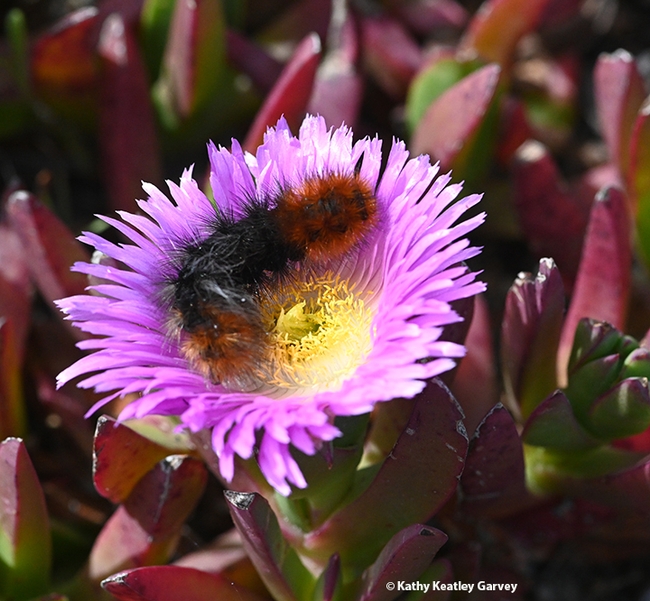
A woolly bear caterpillar investigating an ice plant on Bodega Head, Sonoma County, in April 2022.(Photo by Kathy Keatley Garvey)
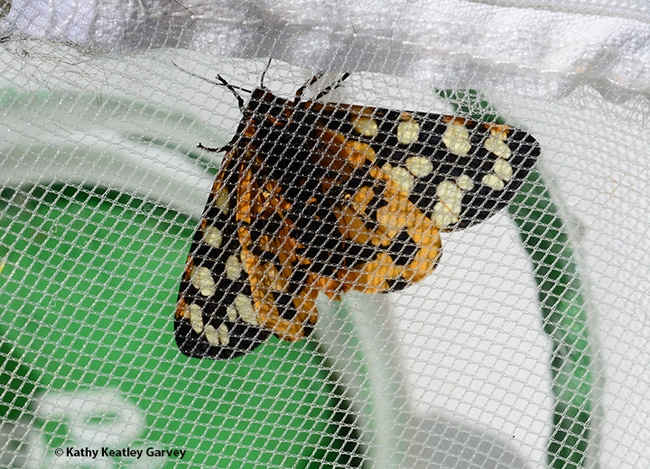
The woolly bear caterpillar becomes a tiger moth, Platyprepia virginalis. (Photo by Kathy Keatley Garvey)
The Land of Z (Zerene) and The Land of B (Bohart)
Friday, June 10 proved to be a great day in "The Land of Z," and Saturday, July 16 promises to be a great day in the "Land of B." The Land of Z?...
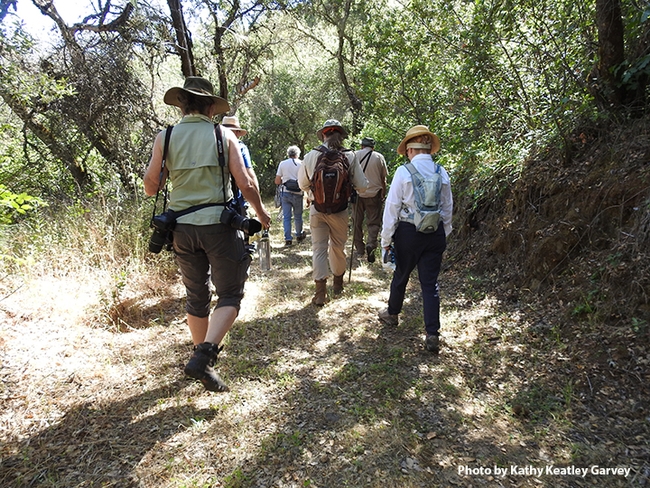
And the tour of the California dogface butterfly habitat begins. (Photo by Kathy Keatley Garvey)
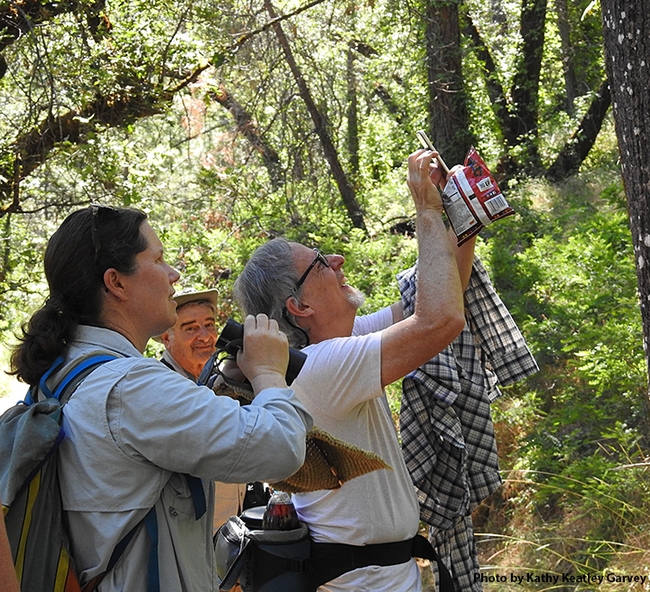
Tabatha Yang and Steve Heydon of the Bohart crew photograph California dogface butterflies. In back is Bohart associate Greg Kareofelas. "Males fly a beat, often coming down a canyon, then turning around and going back up again, and repeating," says UC Davis distinguished professor Art Shapiro. "Both sexes routinely fly 15-20 feet off the ground.(Photo by Kathy Keatley Garvey)
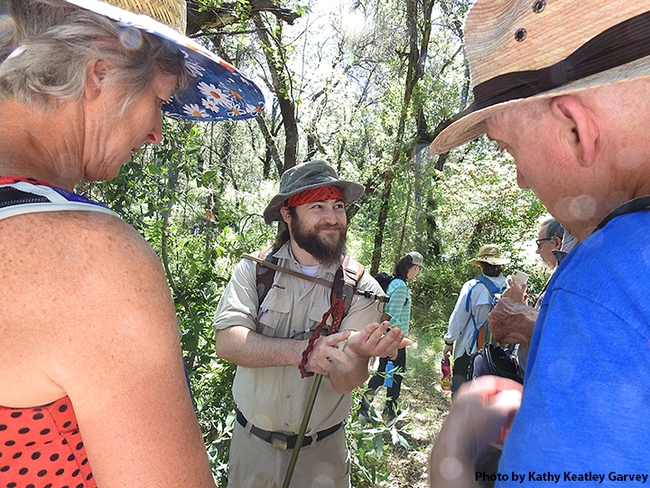
Bohart lab assistant Brennen Dyer with a California dogface butterfly. (Photo by Kathy Keatley Garvey)
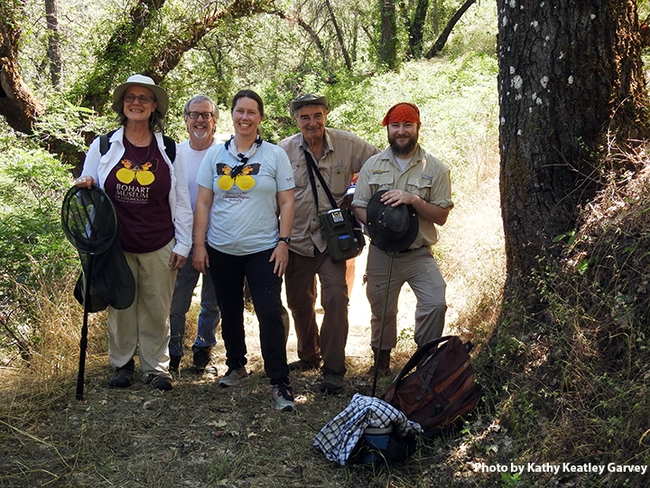
The Bohart crew on the Auburn field trip included (from left) Professor Fran Keller of Folsom Lake College, a Bohart scientist; senior museum scientist Steve Heydon; Tabatha Yang, education and outreach coordinator; Greg Kareofelas, Bohart associate and a PLT volunteer guide; and Bohart lab assistant Brennen Dyer. (Photo by Kathy Keatley Garvey)
How a 'Bear' Can Outsmart a Fox
There's a way for a bear to outsmart a fox. A teddy bear bee, that is. We just witnessed a male Valley carpenter bee,...
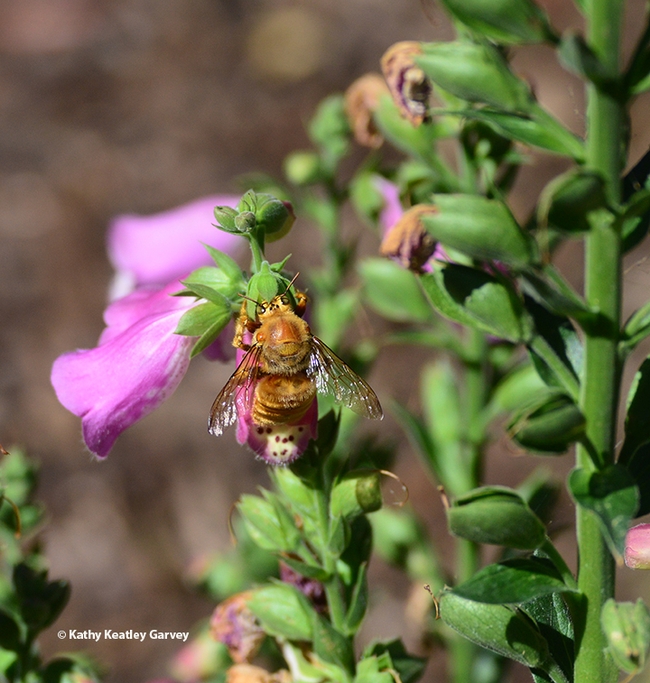
A male valley carpenter bee, Xylocopa sonorina, engaging in nectar robbing; he's sipping nectar through a hole in the base of a foxglove blossom. (Photo by Kathy Keatley Garvey)
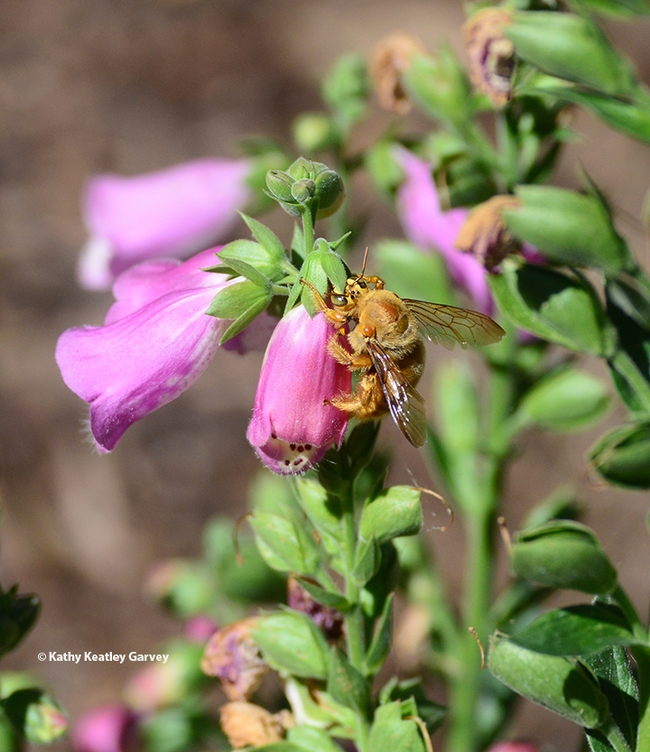
Ah, sweet nectar. This male Valley carpenter bee lingers a bit to sip the sweet reward. (Photo by Kathy Keatley Garvey)

Close-up of male Valley carpenter bee, "the teddy bear beer," engaged in nectar robbing. (Photo by Kathy Keatley Garvey)
Take a Virtual Tour of the California Dogface Butterfly Habitat
Ever seen the California state insect, the dogface butterfly (Zerene eurydice), or toured its celebrated habitat near Auburn on...
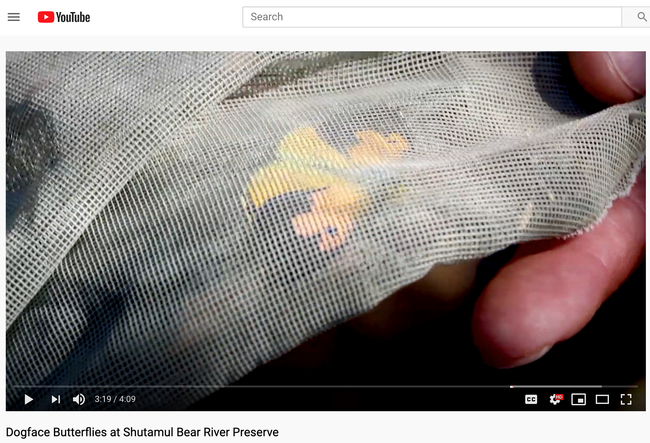
This is a screen shot from the Placer Land Trust (PLT) video on the California state insect. Bohart Museum associate and PLT guide Greg Kareofelas had just netted the butterfly in a display-and-release activity.
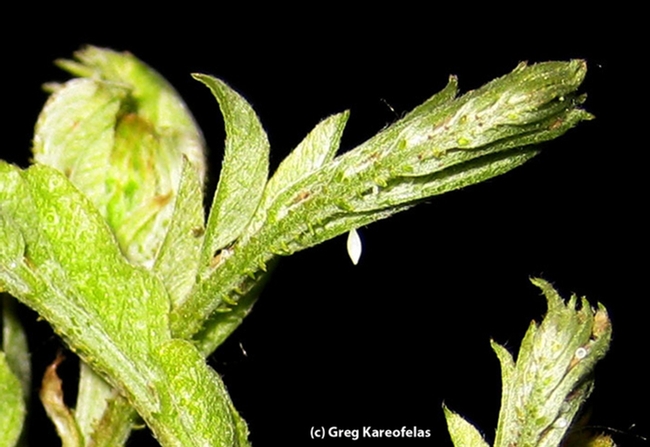
This is the egg of the California dogface butterfly, Zerene eurydice. (Photo by Greg Kareofelas)
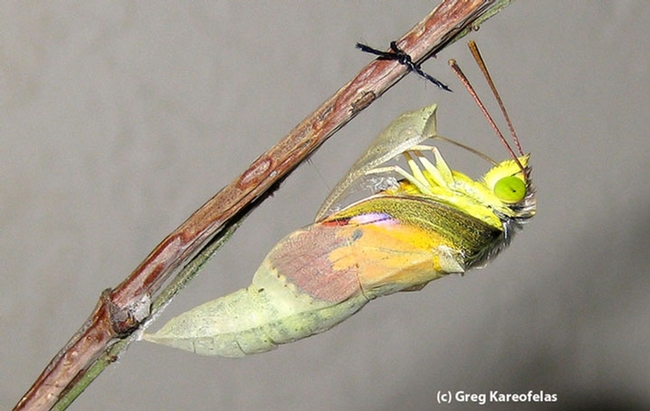
This is the chrysalis of the California dogface butterfly reared by naturalist Greg Kareofelas of Davis. (Photo by Greg Kareofelas)
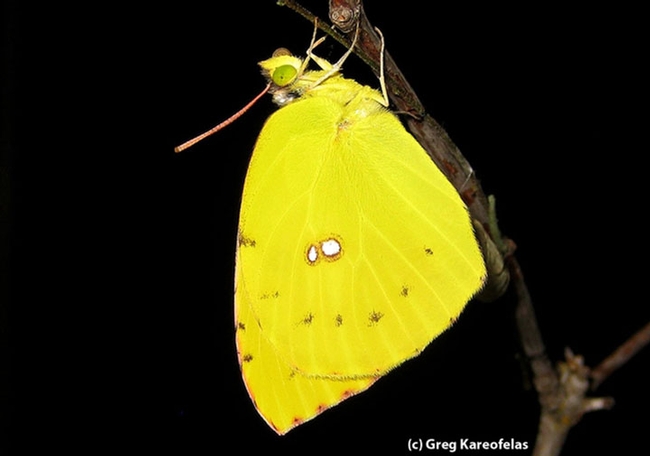
An adult California dogface butterfly reared by Greg Kareofelas. (Photo by Greg Kareofelas)
Two Bees: A Close Encounter with a Cousin
So here I am, a male Valley carpenter bee, Xylocopa varipuncta, just enjoying the nectar on this tower of jewels, Echium wildpretii, in...
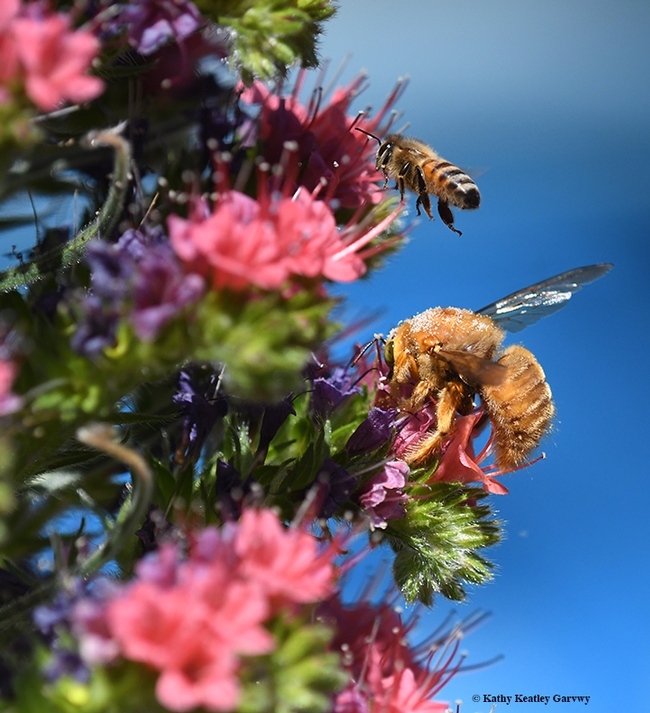
A honey bee, Apis mellifera, buzzes over the head of a male Valley carpenter bee, Xylocopa varipuncta, on a tower of jewels, Echium wildpretii. (Photo by Kathy Keatley Garvey)
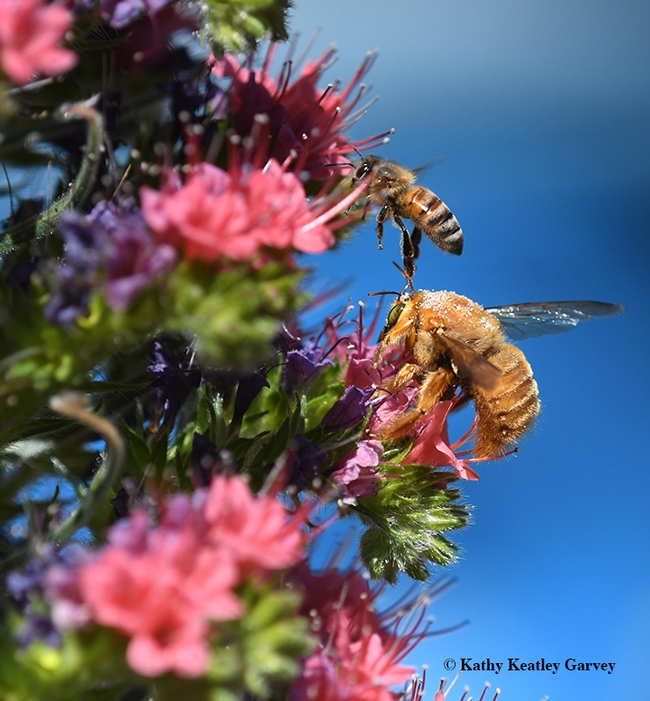
The honey bee's feet touches the antennae of the male Valley carpenter bee. (Photo by Kathy Keatley Garvey)
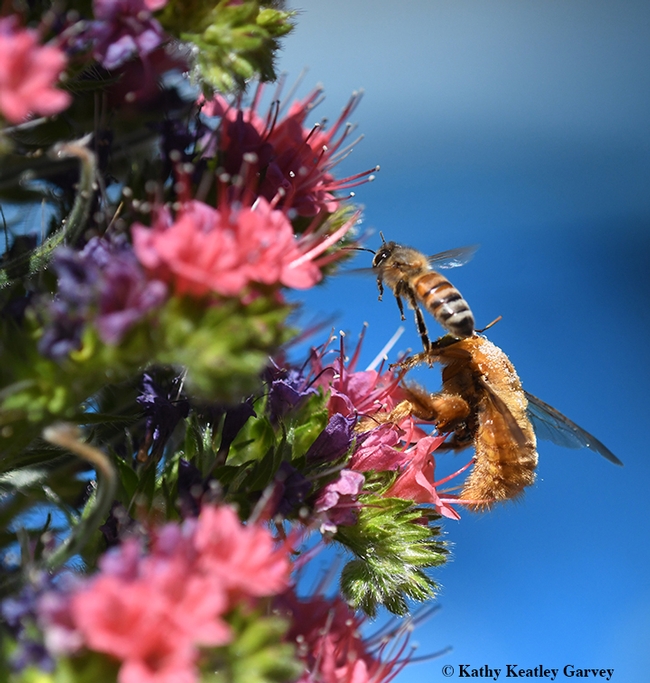
The honey bee's abdomen touches the head of the male Valley carpenter bee. (Photo by Kathy Keatley Garvey)
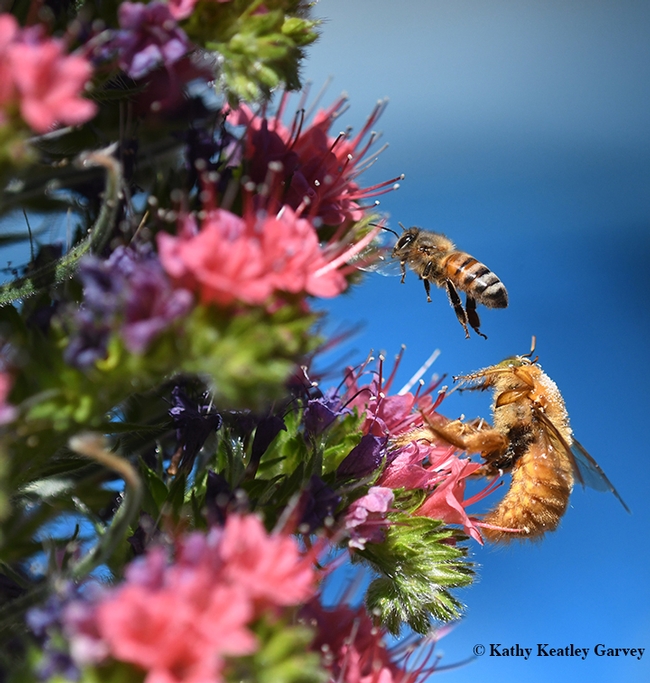
Up, up and away. Off to the next blossom. (Photo by Kathy Keatley Garvey)
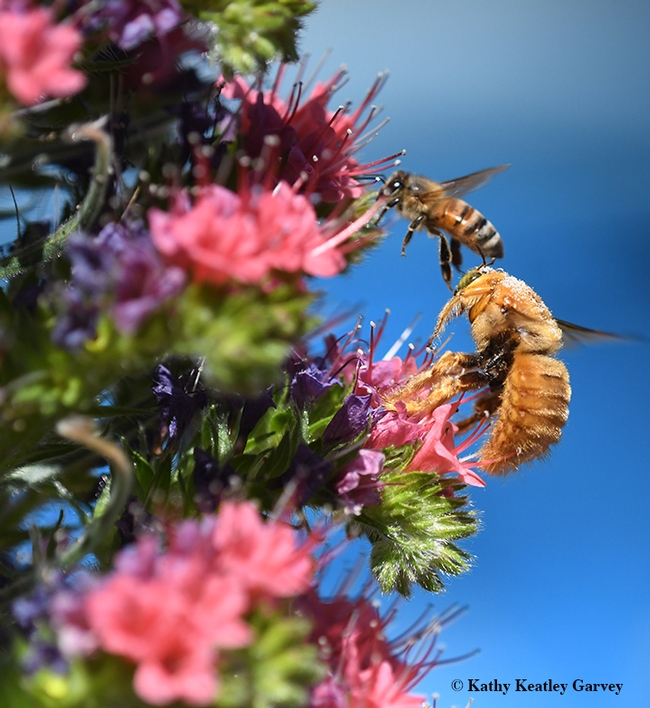
Watch out, Mr. Carpenter Bee, I'm coming back down. (Photo by Kathy Keatley Garvey)
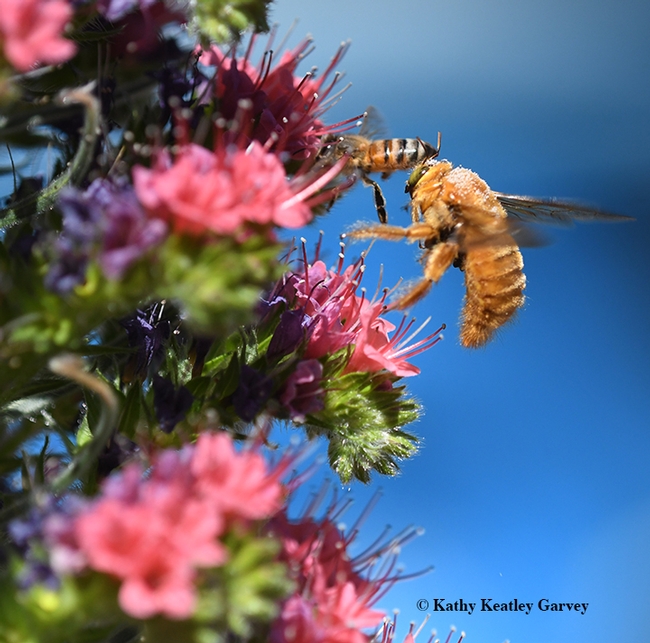
You're crowding me, Ms. Honey Bee! (Photo by Kathy Keatley Garvey)
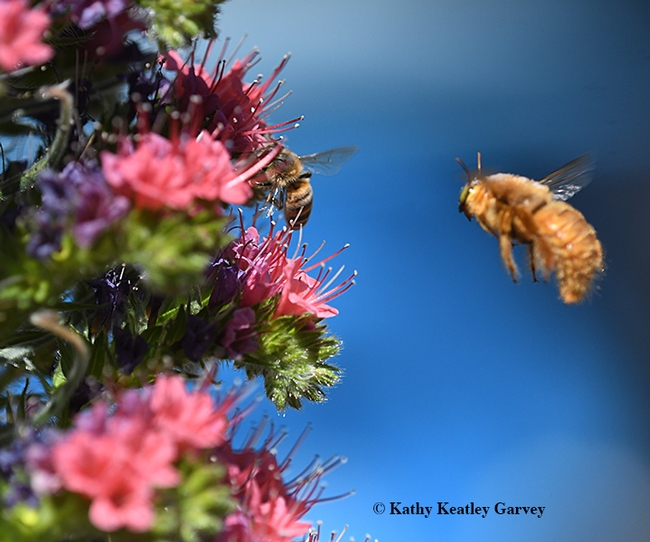
I'm outta here, says the carpenter bee to the honey bee. Take it all, it's yours. (Photo by Kathy Keatley Garvey)

